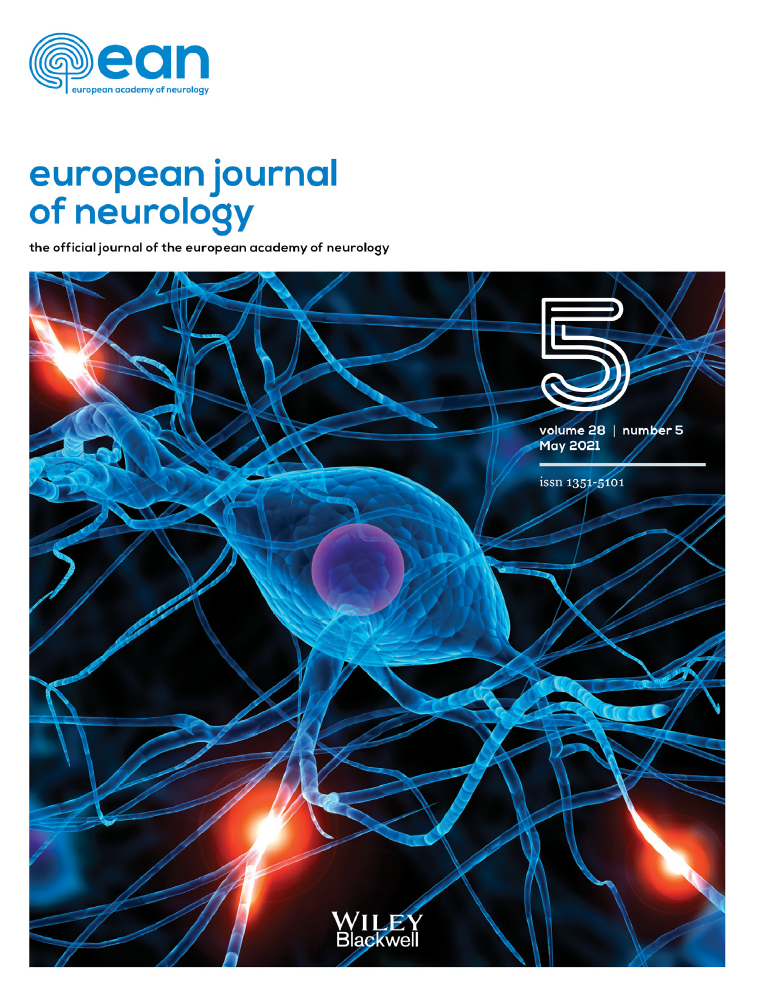The long-term outcome of MOGAD: An observational national cohort study of 61 patients
Funding information
The present study is supported by a grant from ARSEP foundation and a grant provided by the French State and handled by the “Agence Nationale de la Recherche,” within the framework of the “Investments for the Future” programme, under the reference ANR- 551 10-COHO-002 Observatoire Français de la Sclérose en Plaques (OFSEP).
Abstract
Background and objective
The prognosis in myelin oligodendrocyte glycoprotein (MOG) antibody-associated disease (MOGAD) is a matter of debate. Our aim was to assess the long-term outcomes of patients with MOGAD.
Methods
We retrospectively analysed the clinical and paraclinical data of patients from the French nationwide observatory study NOMADMUS who tested positive for MOG antibodies (MOG-IgG) and who had clinical follow-up of at least 8 years from their first episode.
Results
Sixty-one patients (median [range] age at onset 27 [3–69] years), with a median (mean; range) follow-up of 177 (212.8; 98–657) months, were included. Among 58 patients with a relapsing course, 26.3% relapsed in the first year after onset. Of the 61 patients, 90.2% experienced at least one episode of optic neuritis. At last visit, the median (mean; range) Expanded Disability Status Scale (EDSS) score was 1 (2.12; 0–7.5), 12.5% had an EDSS score ≥6 and 37.5% had an EDSS score ≥3. Of 51 patients with final visual acuity (VA) data available, 15.7% had VA ≤0.1 in at least one eye and 25.5% had VA ≤0.5 in at least one eye. Bilateral blindness (VA ≤0.1) was present in 5.9% of patients. Finally, 12.5% of patients presented bladder dysfunction requiring long-term urinary catheterization. No factor associated significantly with a final EDSS score ≥3 or with final VA ≤0.1 was found.
Conclusion
Overall long-term favourable outcomes were achieved in a majority of our patients, but severe impairment, in particular visual damage, was not uncommon.
CONFLICT OF INTERESTS
No disclosure relevant to the manuscript.
Open Research
DATA AVAILABILITY STATEMENT
This study was done within the framework of OFSEP. Because of national confidentiality requirements, only anonymised data, not pseudonymised data, can be shared. However, access to OFSEP data to conduct a scientific project is possible by following the OFSEP data access process (ofsep.org/en/data-access) and with respect to French law.




